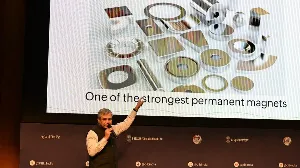Global HIV Response Faces Significant Setback Due to Funding Cuts

The global initiative to combat HIV has encountered its most serious crisis in decades, according to a recent report by the Joint United Nations Programme on HIV/AIDS (UNAIDS), which was published in anticipation of World AIDS Day 2025. The report, titled ‘Overcoming Disruption, Transforming the AIDS Response’, outlines the extensive repercussions of diminished international funding and the erosion of global solidarity that have particularly affected low- and middle-income nations heavily impacted by HIV.
In 2025, abrupt cuts in international aid for HIV have exacerbated existing financial shortfalls, with the UNAIDS report warning that failure to meet the 2030 HIV targets set out in the new Global AIDS Strategy could lead to an increase of 3.3 million new HIV infections by the end of the decade.
Significantly, the United States, which provides 75% of the global funding for HIV initiatives, ceased all support in January 2025. Winnie Byanyima, Executive Director of UNAIDS, expressed concern over the funding crisis, stating, “The funding crisis has exposed the fragility of the progress we fought so hard to achieve. Behind every data point in this report are people—babies and children missed for HIV screening or early HIV diagnosis, young women cut off from prevention support, and communities suddenly left without services and care. We cannot abandon them.”
The Organisation for Economic Co-operation and Development (OECD) projects that external health assistance will decline by 30-40% in 2025 compared to 2023, leading to immediate and severe disruptions in health services across low- and middle-income countries.
UNAIDS highlighted that prevention services have been particularly hard hit, with significant reductions in access to medications designed to prevent HIV, such as pre-exposure prophylaxis (PrEP), and a notable decrease in voluntary medical male circumcision, creating a growing gap in protection for millions. Currently, around 40.8 million individuals worldwide are living with HIV, with 1.3 million new infections reported in 2024 alone. Alarmingly, 9.2 million people still do not have access to treatment.
The dismantling of targeted HIV prevention programmes for young women has left many adolescent girls without essential services related to prevention, mental health, and gender-based violence, further increasing their vulnerability. The report noted that in 2024, 570 new HIV infections occurred each day among young women and girls aged 15 to 24.
Community-led organisations, which are vital to the HIV response and have been instrumental in reaching the most vulnerable populations, have reported widespread closures, with over 60% of women-led organisations suspending critical programmes. Furthermore, services for key populations, including men who have sex with men, sex workers, people who inject drugs, and transgender individuals, have also been severely affected.
The funding crisis is unfolding in a deteriorating global human rights context, disproportionately impacting marginalised populations. In 2025, the number of countries criminalising same-sex sexual activity has risen for the first time since UNAIDS began monitoring punitive laws in 2008. Restrictions on civil society, particularly organisations supporting key population groups and young women in sub-Saharan Africa, are further hindering access to essential HIV services.
Despite these challenges, some nations have swiftly acted to mitigate funding shortfalls. Many have reported stable or even increased rates of new initiations on antiretroviral therapy, demonstrating resilience in the face of adversity. Innovations in HIV prevention, such as biannual injections, are also gaining traction and hold the potential to significantly reduce new infections in high-burden areas.
Winnie Byanyima remarked, “We know what works—we have the science, tools, and proven strategies. What we need now is political courage. Investing in communities, in prevention, in innovation and in protecting human rights as the path to end AIDS.”
UNAIDS expressed cautious optimism regarding developments in the latter half of 2025 that may help sustain vital international financing. The organisation urged global leaders to reaffirm their commitment to solidarity, multilateralism, and collective action in the fight against HIV/AIDS.
It called for sustained international assistance to ensure a gradual and secure transition to domestic financing for those countries in greatest need, emphasising that domestic funding alone cannot compensate for the existing gaps. “Commitments to urgent and meaningful debt restructuring as per the G20 Leaders Declaration are essential to release resources currently tied up in debt repayments,” it added.
UNAIDS also encouraged investments in innovation, including affordable long-acting prevention and treatment options, and advocated for the accelerated rollout of lenacapavir to reach 20 million people.
The report concluded by highlighting that after decades of effort, the global HIV response is on the brink of achieving its goal to end AIDS as a public health threat by 2030. “This is our moment to choose,” Byanyima urged. “We can allow these shocks to undo decades of hard-won gains, or we can unite behind the shared vision of ending AIDS. Millions of lives depend on the choices we make today.”

India Rebuts Pakistan's Criticism of Ram Temple Flag Hoisting

Tata Sierra 2025 Launch: A Blend of Luxury and Performance

India's Cabinet Approves Rs 7,200 Crore Scheme for Rare Earth Magnets

HP Plans Job Cuts Amid Tech Sector Restructuring





